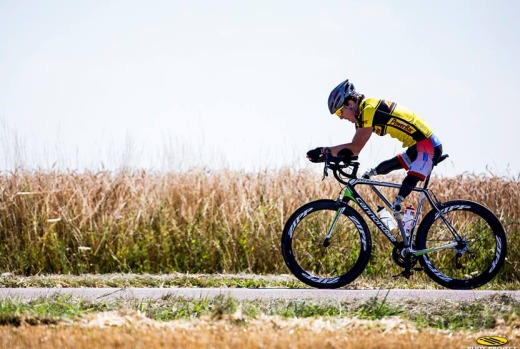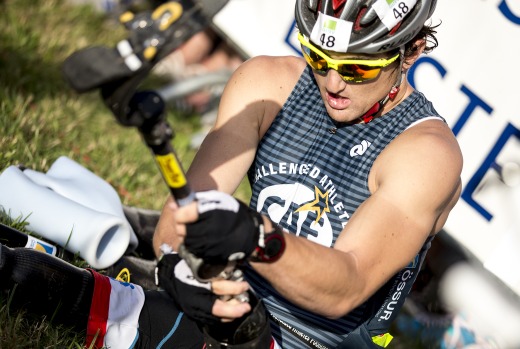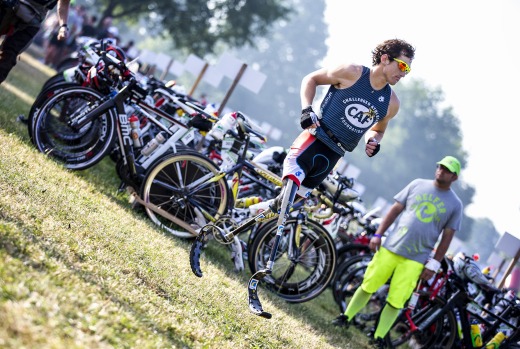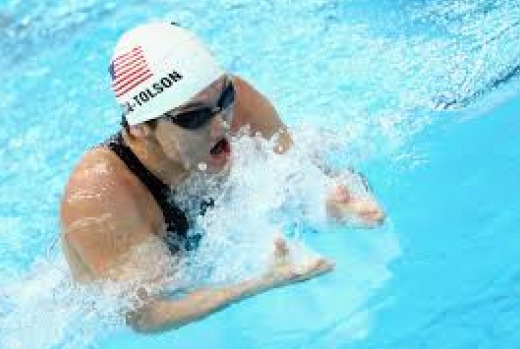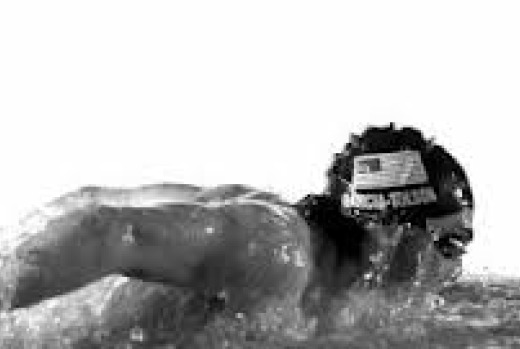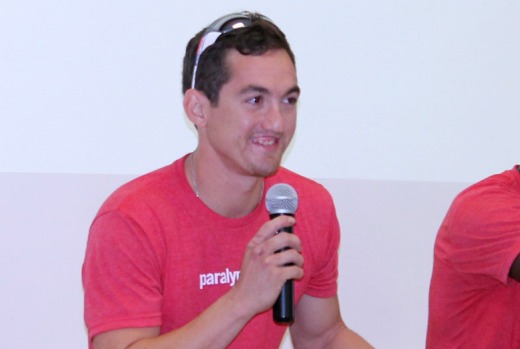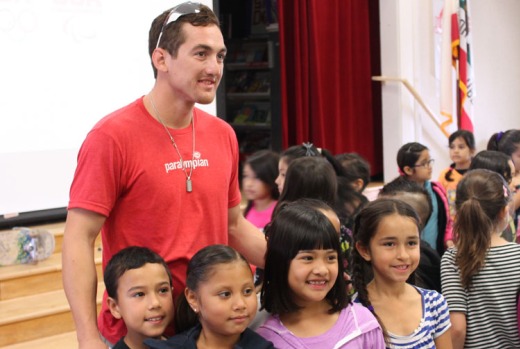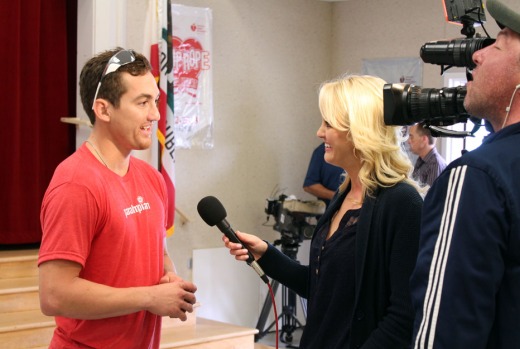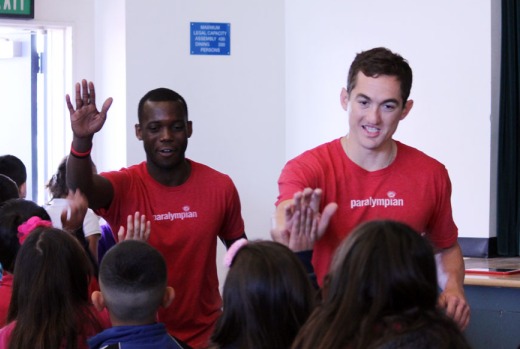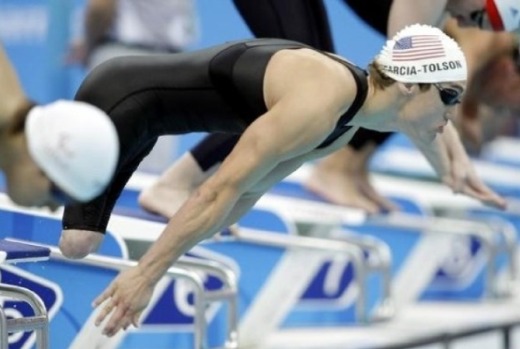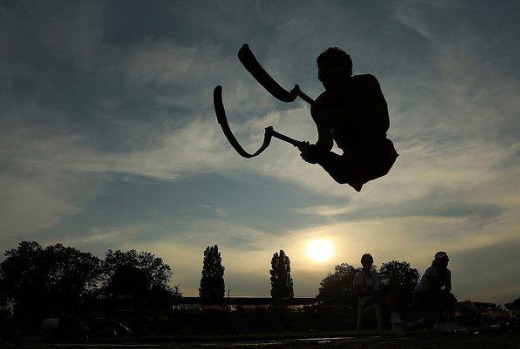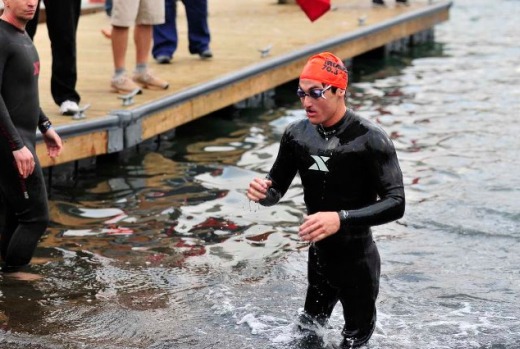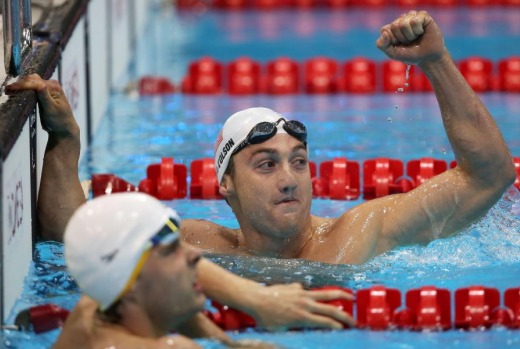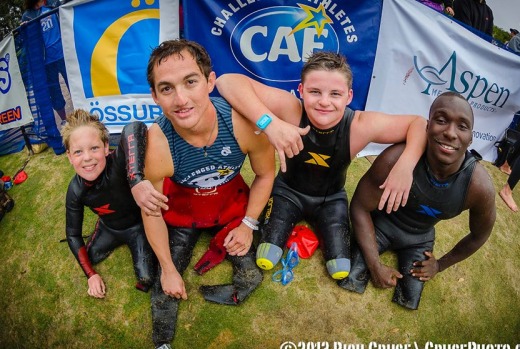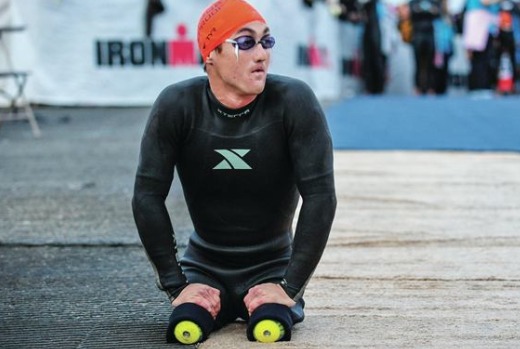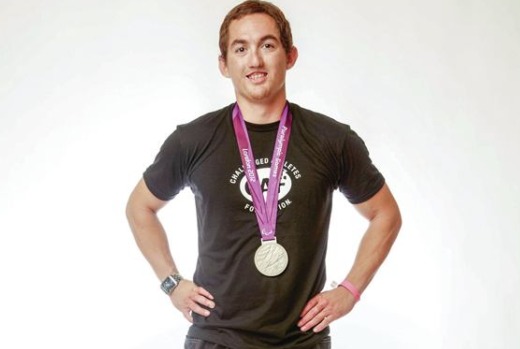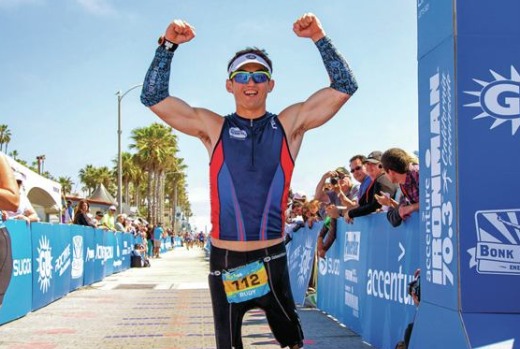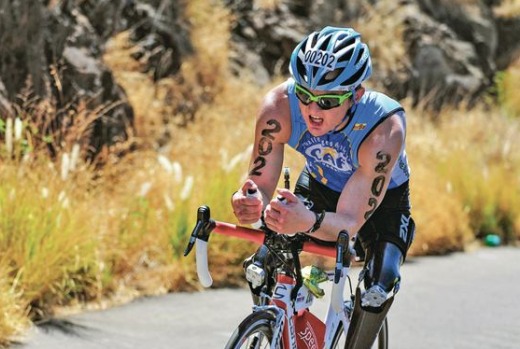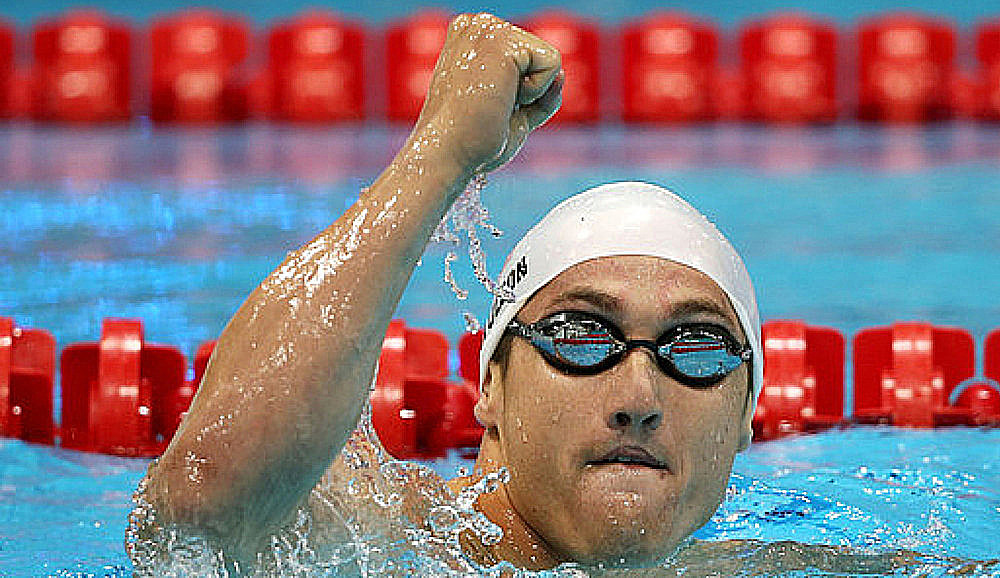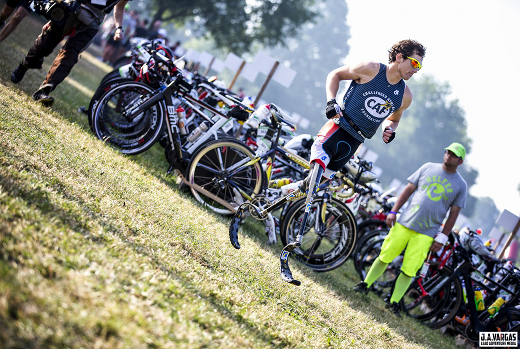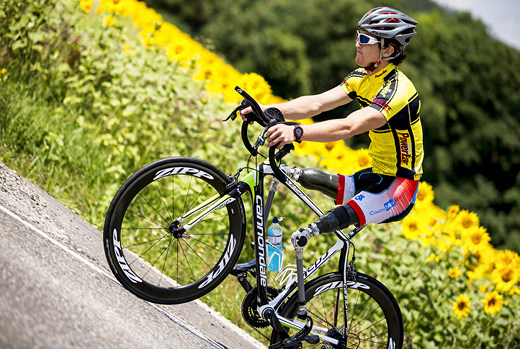
Rudy Garcia-Tolson
– Paratriathlete and Motivational Speaker –
“The only real disability in life is a negative attitude”
The sport of triathlon is powerfully inspirational. Every single athlete that approaches the starting line has a story that brought them to that point—a story of struggle, a story of triumph, a story of perseverance…a story uniquely their own.
No story is more unique than that of 26-year-old Paralympic gold medalist swimmer Rudy Garcia-Tolson. He stands alone as the world’s first double above-knee amputee to ever complete an Ironman triathlon. The astounding feat in 2009 earned him an ESPY nomination the following year. You may say, Impossible! And that is probably true. Rudy does the impossible every day.
Born with several rare birth defects as the result of popliteal pterygium syndrome, by age 5 he had already endured 15 surgeries to attempt to straighten his legs. Faced with a lifetime in a wheelchair, Rudy made the brave choice at that young age to amputate both legs. It was then that his life truly began! A bundle of endless energy, Rudy bounded his way through childhood, leaving a wake of worn out prosthetic legs behind him.
He began swimming at age 6—and quickly met his goal of beating an able-bodied kid to the wall. “That moment is when I knew that’s what I wanted to do,” Rudy says. “When I was swimming, I was able to adjust fully with my arms.” Rudy joined an able-bodied swim team in his hometown of Riverside, California, and by age 8, had already set his sights on winning a Gold Medal at the 2004 Paralympics. At age 9, he became the youngest challenged athlete to ever qualify and medal at the Disabled Swim Nationals. The following year, he set his first national record in swimming. At age 11, he set the national record in the 200-meter breaststroke in his division.
Swimming wasn’t enough to quench his competitive nature! Rudy competed in his first relay team triathlon at age 8 as the swimmer, along with his teammates, celebrity Robin Williams and marathon champion Scott Tinley. Rudy first met Robin at a Malibu triathlon in 1997 and began a longtime friendship through a shared competitive spirit (and love of video games!). Williams was pivotal in raising the profile of the challenged athletes movement over the next 15 years. Together with Tinley, the pair formed “Team Braveheart” for the annual Challenged Athletes Foundation triathlon. For 11 years, Rudy did the swim, Robin did the bike, and Tinley finished with the run. “I don’t think he ever looked at me as a boy with no legs,” says Rudy. “He always saw past this.”
Rudy completed his first solo triathlon at age 10 using a standard mountain bike (the youngest bilateral amputee to ever do so), and the rest is history. He made it a goal to someday finish an Ironman. “Growing up, I saw the Ironman in Hawaii on TV every year and thought about how crazy it was to push yourself that far and that long in those conditions,” he says. “There’s no better challenge than competing in an Ironman. It’s a great way to show people that having a disability is just a challenge, and that the real disability in life is a negative attitude.”
In 2004, at just 16 years of age, Rudy held true to his word of going for Gold at the Athens Paralympic Games, winning the 200-meter Individual Medley and breaking the world record for his SM7 class. To this day, that gold medal remains his proudest accomplishment. “Being able to swim my first event on Day 1 and go faster than I’ve ever gone…it was an amazing experience, and something you dream about,” he shares.
“It will come,” he says. “I just need to be patient. It’s a very grueling training cycle. It’s a 90 percent mental thing, and a 10 percent physical thing. The clocks come into play, the hours go by, and you wonder why you’re doing it.”
In 2012, at the London Paralympic Games, Rudy became the first athlete to compete in both Swimming and Track & Field. In the 200m IM semi-finals, he broke his SM7 world record again, but in the final was out-touched at the wall, bringing home silver. In his Track & Field debut, he competed in long jump and the 200-meter race.
At the 2016 Paralympic Games in Rio de Janeiro, Rudy will aim to become the first Paralympic athlete to compete in three sports by adding triathlon to the mix. Some may say it’s an impossible feat, but if anyone knows Rudy, they know that chasing the impossible is what makes him a trailblazer in the Paralympic movement.
This past summer, on July 20, 2014, Rudy attempted to finish yet another long-distance triathlon at Germany’s Challenge Roth. The 2x Gold medalist swimmer completed the swim portion through the canal in just 57 minutes, followed by a personal record time of 8:25 on the bike. He pulled out of the race at the 15k run mark with back spasms. His 14-hour effort was a phenomenal achievement, considering he had just two months of training prior to the competition, and hadn’t ridden a bike in 5 years. Rudy and five other athletes, including women’s champion Mirinda Carfrae and pro Luke McKenzie, were part of an acclaimed documentary film project that followed the journeys of each athlete during their training and on race day. The film, “Challenge Roth,” chronicles the true heart of triathlon and the triumph of the human spirit, and will be released in theaters nationwide in 2015.
He has also won several prestigious awards, including the Arete Courage in Sports Award and the Casey Martin Award from Nike. In 2003, Rudy was named one of Teen People Magazine’s “20 Teens Who Will Change the World.” He has been featured on The Oprah Show twice.
“All of my life, I’ve had people tell me I’m an inspiration, that I inspire them to get active or I inspire them to change their lifestyle,” he shares. “My life and having no legs and doing sports…it’s a blessing, a gift from God I think. Now moving forward, I get to inspire the younger generation—especially the younger challenged athletes. There is a big movement going on around the world, and that is the challenged athlete movement—the Paralympic movement. People are starting to realize that just because we look a little different doesn’t mean we want to be treated different. I want to be treated just like any able-bodied athlete is treated. Never let people tell you that you can’t do something. Prove them wrong.”
To follow Rudy’s journey as he trains to compete and win Gold in Rio de Janeiro at the 2016 Summer Paralympics, visit www.www.nolegsnolimits.com.com.
The Challenged Athletes Foundation Rudy serves as a spokesperson for the Challenged Athletes Foundation and travels the country as a motivational speaker and CAF representative. He has been involved with CAF since he was 9. “I was the first kid to get involved,” he says. “Now we have over 100 kids involved! The challenged athlete movement has grown, and I feel honored to play a part in that movement. IF kids can’t afford a running leg, a grant from the foundation will help them out. It’s cool to be able to see what these kids will be doing in the future. They’re going to be changing the world one way or another. Last year we gave out 2 million in grants to 3,000 challenged athletes around the world.” www.challengedathletes.org.


Rudy in his own words
How does it feel to be an inspiration to others? Did you ever expect to become an inspiration?
All of my life, I’ve had people tell me I’m an inspiration, that I inspire them to get active or I inspire them to change their lifestyle. My life and having no legs and doing sports…it’s a blessing, a gift from God I think. I’m not too religious, but I do believe that I’m here for a purpose. Now moving forward, I get to inspire the younger generation…especially the younger challenged athletes. There is a big movement going on around the world, and that is the challenged athlete movement…Paralympic movement. People are starting to realize that just because we look a little different doesn’t mean we want to be treated different. I want to be treated just like any able-bodied athlete is treated.

